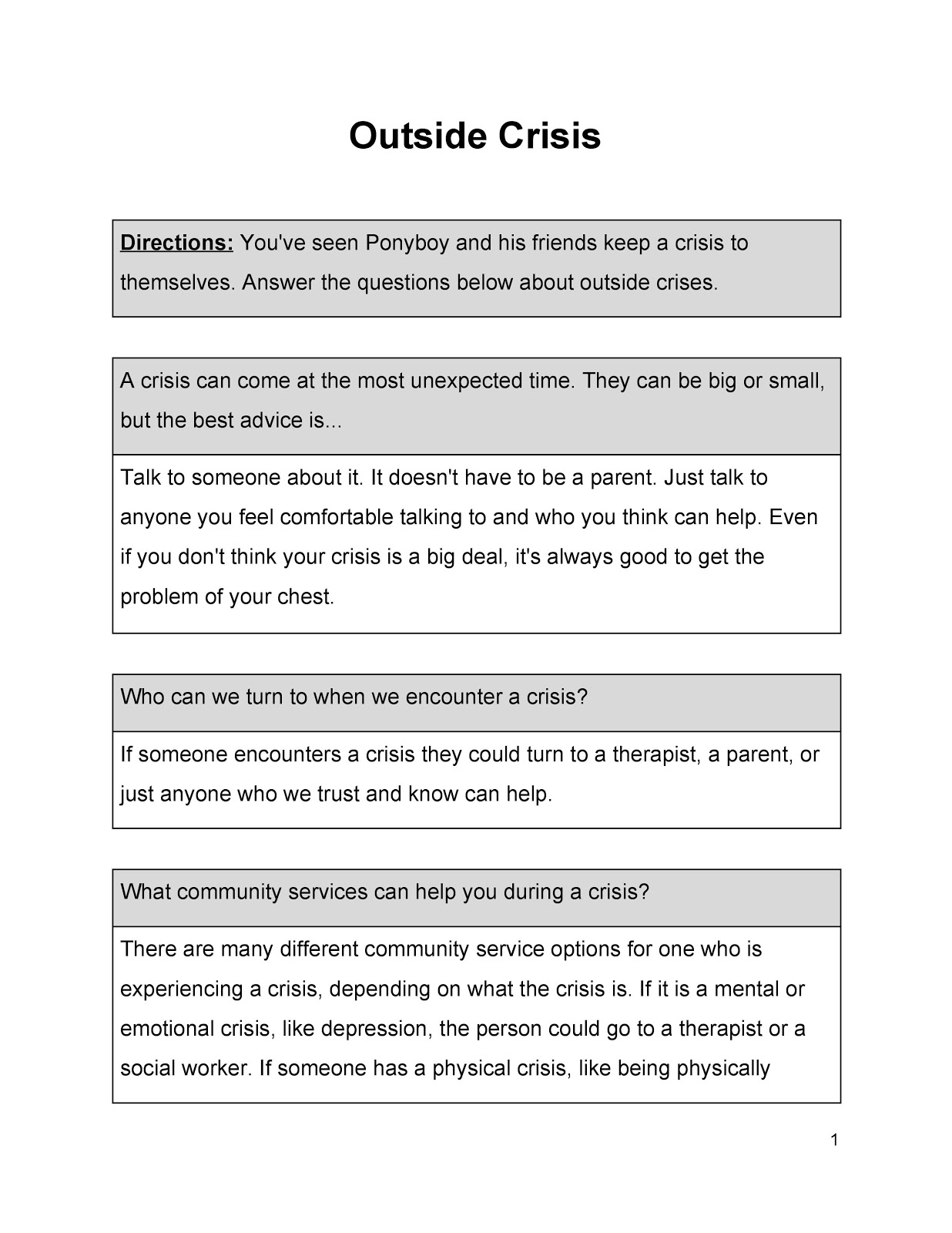Empowering students with language-based learning differences

Siena Blog



The Siena School Blog
Discover, Learn, Celebrate, and Empower
Welcome to Siena's blog, your source for helpful, cutting-edge resources tailored to teachers, parents, and other advocates in the learning differences community. We are dedicated to providing a wealth of curated knowledge spanning various topics, ranging from dyslexia advocacy and awareness to classroom teaching strategies, heritage month profiles, and social and emotional health.
Discover innovative classroom strategies that inspire creativity and foster a love of learning.
Our commitment to social-emotional wellness ensures that we provide valuable insights into healthy student development and self-advocacy.
Discover resources, reading and podcast recommendations, volunteering opportunities, and more for parents in the LD community.
Our important heritage month posts highlight key people, offer reading and podcast recommendations, and more.
Calming Strategies in the Classroom
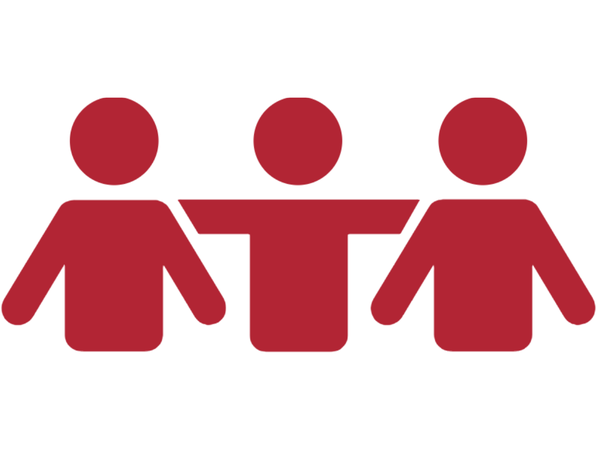
Avg. read time 5-6 min.
Imagine your student is in the classroom learning a new lesson and begins to feel anxious. They don’t want to miss the lesson or lose learning time, but they also want to avoid feeling the big feelings!
The Take a Break Space: Calming Strategies in the Classroom folder that The Siena School uses is specifically designed to help students take a few minutes to (re)focus their attention on a multisensory coping strategy to reset and reengage in the lesson. It collects intentional calming tools and strategies that are helpful for all Siena students to go from “Fight, Flight, and Freeze” to “Rest and Digest.”
Also, it promotes relaxation and better focus by shifting attention from dysregulation to mindful soothing stimuli, creating a safe space for self-regulation.
Classroom Calming Strategies for Teachers
It’s very important to give students ready access to calming images and other strategies during the school day. Among other social-emotional benefits, this makes taking care of their mental health a multisensory experience for them, as well as complements their academic development.
Sensory-focused activities remind our students to pay attention to the physical sensations accompanying their emotions. This expands the social-emotional experience and understanding for our students, reminding them that their emotions have a purpose and encouraging reflection on why that feeling happened. When they understand the why, they can then have greater awareness of what they need and ask for it.
Siena teachers are encouraged to remind students to utilize the Take a Break folder and actively send the student to the calming space for a reset. This allows for the student to feel empowered to take the break they need, as well as have agency over the strategy they choose to reset. The anchoring message here is “It’s okay to take a break” for students and teachers alike.
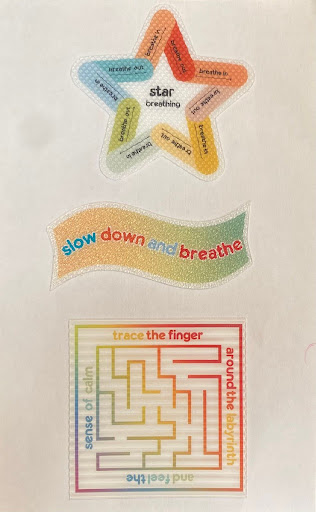
Calming Tools for Classroom Use
Siena teachers on all three campuses have access to our Take a Break folders, and the counseling team will be visiting homerooms for all grades. These folders are full of print graphics, short affirmative meditations, and more, such as:
- Coloring pages — Coloring (or drawing) can greatly help students focus their energy in the moment to help them regulate, particularly when it’s a more detailed design that requires slow and careful movements and focus. See Creative Color Lab for examples that we’ve used at Siena.
- Tactile stickers — Students can add sensory strip stickers to their water bottles, computers or anything else they carry for easy, portable access to calming exercises (such as Star Breathing).
- Positive affirmations — Students can use these short phrases (such as “I am here. I am safe” and “I deserve to be seen”) to ground themselves in moments of dysregulation or self-doubt.
- Spot It/Name It Graphics — Using A Little Spot of Feelings and Emotions (from artist Diane Alber) helps students to “spot” their emotions and clues to better understanding what they are feeling and why. Students in Social and Emotional Learning classes are practicing writing and communicating “I” statements with blanks for them to specify their feelings — such as, “I feel confused when I’m in math class because I don’t understand yet. I need to ask for help.”
- Movement exercises — This helps our students to take an in-class movement break discreetly. The goal is to provide an opportunity to practice movement without disruption. One way we do this is by encouraging them to move to the back of the room and do quiet body stretches; those who want to stay seated can do chair yoga to get those wiggles out.
See these Calming Posters for Your Break Space from Teachers Pay Teachers for additional visual resources for use in classrooms and counseling offices.
How Parents Can Support Students at Home
We all need to take a break throughout the day. Whether it's for 5 minutes to step away and shift your surroundings or to take your full lunch break, we should be telling ourselves “It’s okay to take a break” and mentally reset for whatever task is in front of us.
Parents can talk to their children about strategies that help them to feel focused, confident, and capable in the classroom. Make a list and practice role-play exercises of the “I” statement so they feel assured in communicating their emotions and what they need for success. When they do share a difficult moment in their day, validate their feelings and help them reflect on what they can learn from their experience or what they can do differently next time to feel better.
Resources from Siena’s Blog
Siena’s individualized approach creates a safe, responsive, and nurturing environment that supports our students’ academic and emotional well-being. Our teachers and staff also encourage students to use quiet, focusing fidgets in the classroom to regulate their emotions and ease stress. See this blog post about the benefits of fidgets for Siena students. For more on the value of fidgets for neurodiverse students read The Science Behind Fidget Toys.
See other posts of interest in our Social and Emotional Health blog category, such as these about learning differences and confidence and online and offline boundaries for teens.
The Siena School, a national leader in dyslexia education, serves bright, college-bound students with dyslexia and other language-based learning differences on DC Metro area campuses in Silver Spring, MD (grades 3-4 and 5-12) and Oakton, VA (grades 3-12).
Mental Health Awareness Month 2025
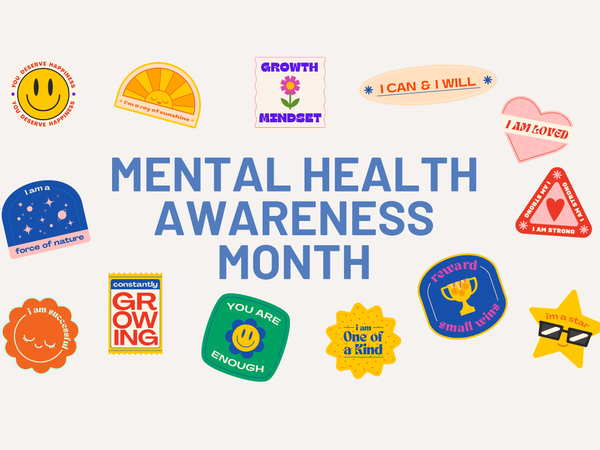
Avg. read time: 3 min.
Mental Health Awareness Month 2025
In honor of the Mental Health Awareness Month 2025 theme, “In Every Story, There’s Strength,” Siena is highlighting some important ways to raise awareness and share strategies for various mental health and neurodiverse needs.
There are many misconceptions and stigmas about mental health and receiving support, and our stories of self-care can help us to reduce stigma, increase empathy and awareness, and be proactive in terms of caring for our mental well-being.
How Parents Can Support Their Children’s Mental Health
There are a few ways we can regularly turn awareness into action, such as the following:
- Increasing understanding
- Reducing misconceptions
- Encouraging help-seeking
- Promoting empathy and compassion
- Challenging stigma
- Using or offering support networks
- Promoting positive representations
- Normalizing therapy and mental self-care
An easy way for parents to check in with their children’s own mental and emotional well-being is to have a conversation (even a short one). Here are some sentence starters to help facilitate that conversation:
- “I notice that you seem ___. Do you want to talk?”
- “What is an emotion that you are feeling right now?”
- “Tell me more about what you are experiencing….”
- ”I want to help. Would support or space right now help you most?”
Although your child might not want to share their story at that particular moment, it’s always important to encourage (and be available for) positive and healthy conversation surrounding feelings and emotions.
Sometimes, our children can be on opposite ends of the spectrum, from not talking at all to hyperbolizing emotions. Parents and other caregivers can be the “calm” and the anchor that your child needs when they feel strong emotions. Showing up consistently and being available for support will go a long way for your child as they continue to tell their stories on their own terms.
Another action we can take is showing empathy, curiosity, and understanding whenever possible, which in turn models good mental health behavior for children so they can contribute to a more accepting and positive environment for all.
Mental Health Resources for Parents
It can be a challenge for parents to navigate when to get support for their child, as well as to find a provider that fits. Below are some helpful resources to get started:
- Anxiety Institute
- Child Mind Institute
- Kingsbury Wellness & Learning Group
- National Council for Wellbeing (includes a free downloadable checklist)
- Psychology Today
Siena Resources
For additional information from The Siena School blog to help navigate students’ social–emotional health, see this post from last year about summer mental health awareness, as well as these about learning differences and confidence and online and offline boundaries for teens.
The Siena School, a national leader in dyslexia education, serves bright, college-bound students with language-based learning differences on DC Metro area campuses in Silver Spring, MD (grades 3-4 and 5-12) and Oakton, VA (grades 3-12).
Support and Self-Care Over the Holidays
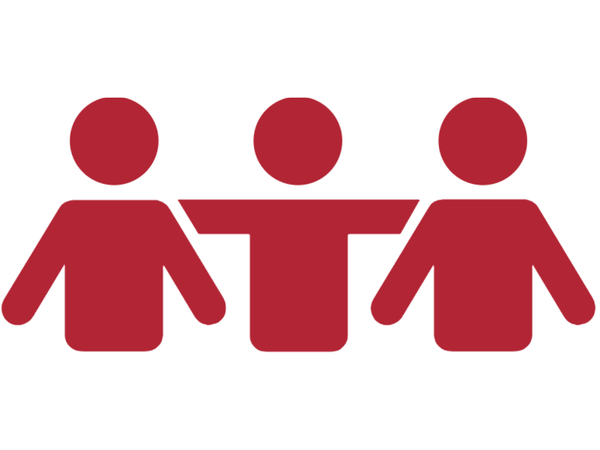
Avg. read time: 3 min.
As we approach the holiday season, you may be feeling lots of emotions—excitement, gratitude, relief, anxiety, frazzle, overwhelm…sometimes all of these at once.
Rest assured: this is very normal.
I want to take this opportunity to share some tips and reminders for supporting both your families and yourselves—all year round but especially during the holiday season. Ultimately, I hope that you enjoy your time with those you care about, and I also encourage you to take time for yourself.
Parents Supporting Themselves
Holidays can be especially overstimulating for everyone; the impact on our neurodiverse population is more severe. This can require additional emotional support for families during what is also a fun and family-centric time.
During such an engaging and active time of year, remember that boundaries, self-care, and overall mindfulness are very important. Siena’s counseling office often shares holiday mental health tips with families, including:
- Schedule downtime: Holidays can very easily end up overscheduled with no time to relax, so reserve a few nights for your family (or just yourself!) to do whatever self-care works best.
- Eat, sleep, and hydrate: During the holidays, our routines are interrupted, and basic needs sometimes aren’t met. Help your family—and yourself—by prioritizing physical self-care.
- Get outside: Spending time outdoors can have major mental health benefits, such as lower stress, better mood, and increased empathy and cooperation. Make time to take daily walks.
- Acknowledge loss: For many people, the “happy holidays” come along with feelings of grief and anger. Maybe it’s the first holiday after a loved one’s passing, or there are traditions that highlight strained family relationships. Remind your children that their feelings are normal.
- Set everyone up for success: Plan ahead for (or avoid) situations that typically don’t go well for your family. Don’t be afraid to remove yourself or your kids when boundaries aren’t respected. Children especially may need your support to know it’s okay to leave a tense situation.
Parents needing extra support can see these Child Mind Resources with a laundry list of articles to refer to, including ones about traveling with children and taking the stress out of holiday gatherings.
Overall, the holidays are a great opportunity to gather with loved ones and engage in community traditions, which can also highlight neurodiverse students’ strengths, creativity, and energy.
Parents Supporting Neurodiverse Children
The needs of neurodiverse students was the central focus of Siena Forest Glen’s annual elementary and middle school performance. This fall the students performed an original adaptation of Fifty-Four Things Wrong with Gwendolyn Rogers, based on the novel by Caela Carter. Fifty-Four Things follows a girl who reads her confidential IEP report listing the emotional and personality traits that define who she is, including Lazy, Picky Eater, Talks Too Much, and many other things supposedly “wrong” with Gwendolyn.
By the end of Fifty-Four Things, though, everyone realizes Gwendolyn’s many strengths and energetic curiosity about the world around her. The story's major theme is how teachers and parents can meet neurodiverse children where they are and work with their differences and their diverse strengths. This resonated strongly with students, staff, and parents in the Siena community and matches how we support our students and embrace their strong qualities.
With ADHD diagnoses for children ages 3-17 rising, it’s especially urgent for parents and teachers to have shared knowledge about how to understand neurodiverse students like Gwendolyn. Among other available resources, these books are helpful guides in understanding neurodiversity and learning differences:
- Conquer Negative Thinking for Teens — Dr. Mary Karapetian and Alvord Anne McGrath
- Detox Your Thoughts — Andrea Bonior, PhD
- Freeing Your Child from Negative Thinking — Tamar Chansky, PhD
- How to Get Unstuck from the Negative Muck — Lake Sullivan, PhD
- Raising a Kid Who Can — Catherine McCarthy, Heather Tedesco, and Jennifer Weaver
- The Dyslexic Advantage — Drs. Brock and Fernette Eide
See also How Schools Can Support Neurodiverse Students from the Child Mind Institute.
The CDC regularly updates data and statistics on ADHD that affect students at home and in school. In the DC area, for example, The Chesapeake Center and Kingsbury Wellness offer testing and therapeutic services for families.
Additional Self-Care Resources
For additional information to navigate students’ social–emotional health, see posts about learning differences and confidence, online and offline boundaries for teens, and social media in our Social and Emotional Health section.
The Siena School, a national leader in dyslexia education, serves bright, college-bound students with language-based learning differences on DC Metro area campuses in Silver Spring, MD (grades 3-4 and 5-12) and Oakton, VA (grades 3-12).
Mental Health Awareness Month 2024
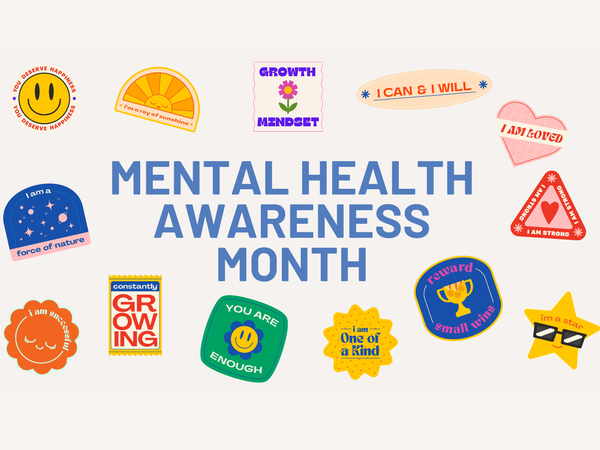
Avg. read time: 3 min.
With Mental Health Awareness Month 2024 winding down, it’s a good time to think about how adolescents can continue their good mindfulness and self-care practices over summer break.
Summer Mental Health Awareness
As we know, trying to find providers in today’s climate can be tough! The needs are high, and the number of providers who fit all of your needs are slim. Yet, as Siena’s School Counselor I’ve helped many parents and families find resources that have helped their child tremendously, and I hope to do the same here.
Summer is a great time to engage your child in therapy, social skills, or any other group wellness activity. There is more flexibility in their schedule, it’s a good time to brush up on skills they may need to be successful in the following year, and there are typically lots of groups offered during this time.
- The National Alliance on Mental Illness (NAMI) is encouraging us to Take the Moment for Mental Health Awareness Month 2024 in “normalizing the practice of taking moments to prioritize mental health care without guilt or shame.” See NAMI’s digital toolkit for ideas and specific resources for their Take the Moment campaign.
- Mental Health America and Substance Abuse and Mental Health Services Administration also have resources available.
It’s vital for students to understand their own mental health and the many resources they have access to. Below are some resources that you may be interested in to check in with your child, assess their needs, and see what you can do over the summer.
Individual Providers/Groups (Silver Spring)
- Bethesda Counseling Services (Carefirst BCBS)
- Brian Wheeler (Aetna)
- Brighter Days Child & Family Therapy (OON)
- Healing Harmony Wellness (BCBS, United Behavioral HC, Cigna)
- Marcus LaSota (Aetna)
- Nathan Luecking (Aetna)
- Orchard Mental Health (Aetna, BCBS, Carefirst)
- Roman Counseling (Cigna and BCBS)
- Stephanie Junghans (Carefirst)
Individual Providers/Groups (Northern Virginia)
- DMV Mental Health (Carefirst BCBS, Cigna/Evernorth)
- McLean Psychotherapy Practices (OON)
- A Rhaea Hope (Anthem, Blue Cross Blue Shield, Cigna, United Healthcare/Optum, Out-Of-Network Insurance, and Self-Pay)
Summer Programs and Groups in the DC Area
- Alvord Baker - Resilience Builder Program
- Brighter Days Child & Family Therapy
- CBT for Anxiety Group and Teen Mindfulness Group: offerings for different groups (grades 7-12)
- SPACE Program (Supportive Parenting for Anxious Childhood Emotions)
- SPACE Program and Parent Management Training Camp SELF: summer sessions for grades 5-8 (June 17-28) and grades 9-10 (August 5-9)
- Study Skills Camp: summer session for grades 6-9 (July 29-August 2)
- WISER: see their Find a Professional page to search for specialized services for students with learning and related needs in the DC Metro Area.
On top of this list, which prioritized providers that accept insurances, I also have lots of out-of-network providers who have been added to my referral lists. I also love the website Psychology Today for finding a provider that fits your needs. Finding support for your child or family can be a great next step in finding success.
Additional Resources
For additional information from The Siena School blog to help navigate students’ social–emotional health, see these posts from May 2023 about learning differences and confidence and online and offline boundaries for teens. See also this post about social media and mental health from May 2022.
The Siena School, a national leader in dyslexia education, serves bright, college-bound students with language-based learning differences on campuses in Silver Spring, MD (grades 3-12) and Oakton, VA (grades 3-11).
Boundaries: At Home, At School, Online
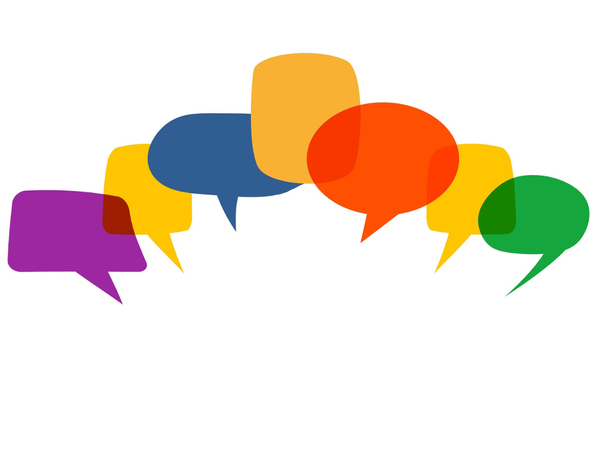
Avg. read time: 3 min.
Mental Health Awareness Month 2023
With Mental Health Awareness Month 2023 winding down, it’s a good time to look ahead to summer and think about how adolescents can continue their good mindfulness and self-care practices over break.
Mental Health and Boundaries
Understanding in-person and online boundaries is important all year, and having unstructured time over summer break might test such boundaries. In our work at Siena this year, we’ve noticed a pattern in the support students have been seeking: how to assert their boundaries firmly but respectfully in their daily interactions.
Part of social–emotional learning involves growing self-awareness, identifying values, and setting boundaries. Here are some ways for adolescents and teenagers to do this:
- Be clear: State your boundaries clearly and succinctly and lead with “I feel” statements, such as “I feel frustrated when you do ____” or “I feel hurt when you do ___.”
- Be firm but kind: When you state a boundary, do so respectfully and at a normal speaking volume. If you have to remind someone of a boundary, continue to be respectful.
- Focus on you: Boundaries are about how you would like to be treated and what you will do if you are not treated that way. Boundaries do not give you control over other people’s behaviors.
- Seek support from an adult: If you are clearly and respectfully stating your boundaries and your boundaries are still being violated, talk to a trusted adult for support.
Parents can help their students practice healthy boundary setting at home. If your child struggles with this, work with them to pick a boundary and practice enforcing it within your family. In addition, model healthy boundary setting for your children.
How Parents Can Help Teens with Online Boundaries
Students—particularly middle schoolers who might have their first cell phone—sometimes need help understanding responsible technology use. Students at this age may not be developmentally ready for the stress that comes from navigating daily digital communications.
Here are a few suggestions to guide your student with social interactions using technology:
- Monitor their communication: Let them know that you will periodically review not only the communication they send out but also what is sent to them.
- Set aside time to review texts: Due to the nature of texting and online communication, students are often forging ahead with minimal guidelines. When you talk through text conversations, explore how certain language can be misunderstood and cause hurt feelings. Parents could then brainstorm ways to communicate more successfully.
- Initiate parent-to-parent communication: If you see a text message that you think another parent should know about, please arrange a time to speak with them. Children are going to make mistakes, and families are encouraged to support each other as we all navigate the complicated world of digital communication.
- Encourage a variety of in-person, real-life relationships: Learning how to negotiate with others face-to-face and resolve differences are among the many interpersonal skills necessary in adult life. When students develop these face-to-face skills, they can adapt these to online skills more easily.
Here are additional suggestions that came from students and adults we’ve talked to this year:
- Encourage downtime from tech: Students often receive tons of messages and phone calls, including in the middle of the night. An easy way to give students a mental break and avoid such disturbances is putting the phone in a different room or powering it down.
- Turn off read receipts: This notifies the sender that the receiver has read the text message and can cause conflict if the receiver does not answer right away and feels slighted or ignored.
- Monitor cell phone usage: This is extremely important for helping our students navigate their online lives. If you see your child is sending multiple text messages in a row or calling someone multiple times, please discuss boundaries. Have them send one message, make one phone call, and then stop.
- Utilize tech apps: Whether it is on your child's phone, laptop, or video game console, using tech apps to control the amount of time they spend logged on is super helpful. Popular social media platforms like Instagram and TikTok also have useful tools for parental controls. You can “set it and forget it” and don't have to constantly monitor usage.
Additional Resources for Mental Health Boundaries
Parents interested in learning more about online boundaries for adolescents and teenagers can look up Delaney Ruston’s film Screenagers: Growing Up in the Digital Age, as well as Devorah Heitner’s Raising Digital Natives. Heitner is also slated to publish a new book in September 2023, Growing Up in Public.
For additional information from The Siena School blog to help navigate students’ social–emotional health, see Haley’s posts about learning differences and confidence from May 2023 and about social media and mental health from May 2022.
Siena’s mission-focused innovative dyslexia education is designed for students in grades 3-12 with language-based learning differences on campuses in Silver Spring, Maryland, and Oakton, Virginia.
Learning Differences and Student Confidence

Avg. read time: 3 min.
Mental Health Awareness Month 2023
The theme for Mental Health Awareness Month 2023 is More Than Enough. As the National Alliance on Mental Illness (NAMI) reminds us,
It’s an opportunity for all of us to come together and remember the inherent value we each hold—no matter our diagnosis, appearance, socioeconomic status, background or ability.
Regardless of whether the school year is winding down or ramping up, families in the LD community can always benefit from up-to-date resources for understanding the social–emotional side of learning differences.
Recent Articles on Learning Differences and Self-Confidence
Here are some salient ideas that I’d like to highlight from these Child Mind Institute articles to help parents and students understand the importance of mental health in the LD community:
How To Help Kids Deal With Embarrassment
- Model how to deal with embarrassment—acknowledge it, remain calm, even identify the embarrassment or say it was also funny.
- Do not avoid embarrassing situations; rather, first work through them and then validate and praise children for their resilience.
- Key quote: “Helping your child gain perspective without minimizing their feelings will make it easier for them to move past negative experiences—and give them an important tool for building self-awareness in the future.”
How To Help Kids Talk About Learning Differences
- Help LD students understand their specific learning difference and discuss how it impacts them.
- Encourage students to practice advocating for what they need or what strategies help them inside and outside the classroom.
- Key quote: “If your child has habits or strategies that help them manage their learning difference, encourage them to let the teacher know.”
Social Challenges of Kids With Learning Differences
- Understand that a non-verbal learning difference could mean challenges with social cues, rules, and understanding jokes.
- Acknowledge that (1) children with ADHD might have trouble organizing an answer, show impulse control issues for sharing, or have trouble listening and (2) children with dyslexia might have trouble with complex language.
- Key quote: “If they’re getting the right support for their learning challenges, they will feel more confident.”
How To Help Kids With LD Build Confidence
- Practice reframing negative thoughts into positive ones.
- Instill a sense of belonging and encourage them to engage in outside activities/interests to help boost their confidence.
- Key quote: “Help your child develop a sense of belonging by helping them make meaningful contributions to family life, friends and community.”
Online Resources for Mental Health Awareness
In addition to the above pieces from Child Mind Institute, here are some other resources to help adolescents, teenagers, and parents get the support they need:
- Brilliant Mindfulness
- Meditation Resources and Guided Meditation Apps
- Mental Health America
- Mental Health Awareness Month (NAMI)
- Mindfulness + Meditation Resources (Stanford Health Library)
- Mindfulness Resources (Calm)
Additional Resources
See also Siena’s Resources webpage for ample links to material on ADHD, dyslexia, parenting, getting support for learning differences, and more. The Siena School blog has recent posts about social media and mental health and lessons in dyslexia advocacy, among many other relevant topics.
The Siena School, a national leader in dyslexia education, serves bright, college-bound students with language-based learning differences on campuses in Silver Spring, MD (grades 3-12) and Oakton, VA (grades 3-11).
Social Media and Mental Health

Mental Health Awareness Month is here, and let’s start with a fact: 46% of Americans will meet the criteria for a mental health condition.
The COVID pandemic has indeed brought on the topic of mental health, as it has been detrimental to some and posed particular mental health challenges. However, research shows that symptoms of mental health—mainly depression and anxiety—have shown increasing trends even before the pandemic.
Given its ubiquity, social media is closely tied to mental health issues, particularly in tweens and teens. Social media usage has both positive and negative effects for young people, so it’s important for parents to be aware of how multifaceted social media is. Let’s take a look at what may be causing these trends to continue rising, as well as some strategies for mental health and social media use that can be implemented to help build resilience.
Social Media and Mental Health
Derek Thompson’s recent article on why teens are so sad refers to four different factors that may have contributed to this increase in anxiety, depression, and other mental health issues:
Social Media
Although there are many benefits to having social media and being connected to lots of information, there are also serious detriments if it is not monitored or used properly. In a video on the addiction of social media and technology in general, writer and speaker Simon Sinek notes that the brain is permanently altered when there is too much stimulation from different modalities of technology (e.g., phones or computers). These permanent changes can cause slower brain function. Thompson’s article states that social media may not be a “rat poison” on tweens’ and teens’ mental health but rather a contributing factor that may lead to higher rates of depression and dependency.
Decrease in Sociality
Social media, as well as many months in isolation during the height of the pandemic, have limited the amount of socialization that people are doing. Moreover, even when some school and other social events opened back up last year, distancing and other restrictions required young people to learn new ways of socializing.
Social media has replaced certain activities, such as hanging out with friends, obtaining a driver’s license, or engaging in extracurricular activities, which can lead to increased feelings of loneliness and isolation.
Stressful World (and More News About It)
Unquestionably, our world over the last few years has been very stressful. Unfortunately, there is also more exposure to hearing of this news due to social media and the immediacy of the internet. Our tweens and teens are reading more about the things that go on in our world, and this causes more levels of stress, which in turn can cause increased amounts of anxiety, depression, and pessimism.
This is especially true right now, due to the recent tragedy in Texas at Robb Elementary School. News such as this mass shooting can be extremely hard to process, especially when we are constantly being updated. Creating space away from the news as well as utilizing resources such as the ones listed below are helpful in checking in with each other and our own mental wellness.
- Talking to Children about Violence: Tips for Parents and Teachers (National Association of School Psychologists)
- 10 Strategies for Talking to Children about School Shootings (Psychology Today)
- Helping Your Children Manage Distress in the Aftermath of a Shooting (American Psychological Society)
- Talking to Children About Tragedies (American Academy of Pediatrics)
Modern Parenting Strategies
Yes, it can be hard to manage our children and teens and protect them from harm. However, certain modern parenting strategies could be more of a hindrance, rather than a help. As parents, our reaction may be to accommodate a child dealing with an anxiety-provoking trigger (such as a dog) by helping them to avoid anxious situations. Although potentially helpful in the short term, avoiding anxious situations could enable the anxiety and also keeps the child from building resilience, which is so necessary for helping our children be successful as they grow up.
Instead, parents might encourage their children to work with a counselor or therapist to devise strategies to label their emotions, validate feelings, communicate and process what is in their control, as well as come up with coping mechanisms to handle stressors. Many of these conversations are helpful when implemented in the home as well! Communication with tweens and teens is key to understanding them, interacting with them, and helping them develop emotionally and persevere through adversity.
Strategies for Building Success and Social Media
With the trends of mental health symptoms increasing, more anxiety and depression amongst our children, and no end to the technology in our lives, how do we help protect our kids without enabling them? This seems like an impossible task!
This article from educational psychologist Michele Borba lists seven skills for building success versus building struggle in our children and teens. Ideally, we as parents are being less accommodating, creating opportunities for exposure to triggers or stressors, having them fix their problems on their own (with guidance) and building empathy and strategies to help them navigate. The seven skills are:
- Self-confidence
- Empathy
- Self-control
- Integrity
- Curiosity
- Perseverance
- Optimism
Ultimately, Borba writes, the idea is to help “boost mental toughness, resilience, social competence, self-awareness, and moral strength.”
It remains important as parents that we monitor social media usage as well as technology overall. Encouraging more time with friends and family, getting outside, participating in extracurricular activities, and limiting the amount of screen time is ideal. Social media contracts (such as this one) may be useful for setting up boundaries. Always communicate with your child about the potential harm of social media and balancing screen time with social time.
Taking care of ourselves and our children is of utmost importance during this time. Communication amongst the family, setting appropriate boundaries, and having coping strategies for all will be so helpful in creating healthy habits and building resilience in everyone.
For related resources, see Devorah Heitner Raising Digital Natives, as well as Delaney Ruston’s film Screenagers: Growing Up in the Digital Age. And, see Siena’s blog for more posts about social and emotional health, including some lessons in self-care and tips for socializing.
It’s Time To Be Social Again: Are Young People Ready?
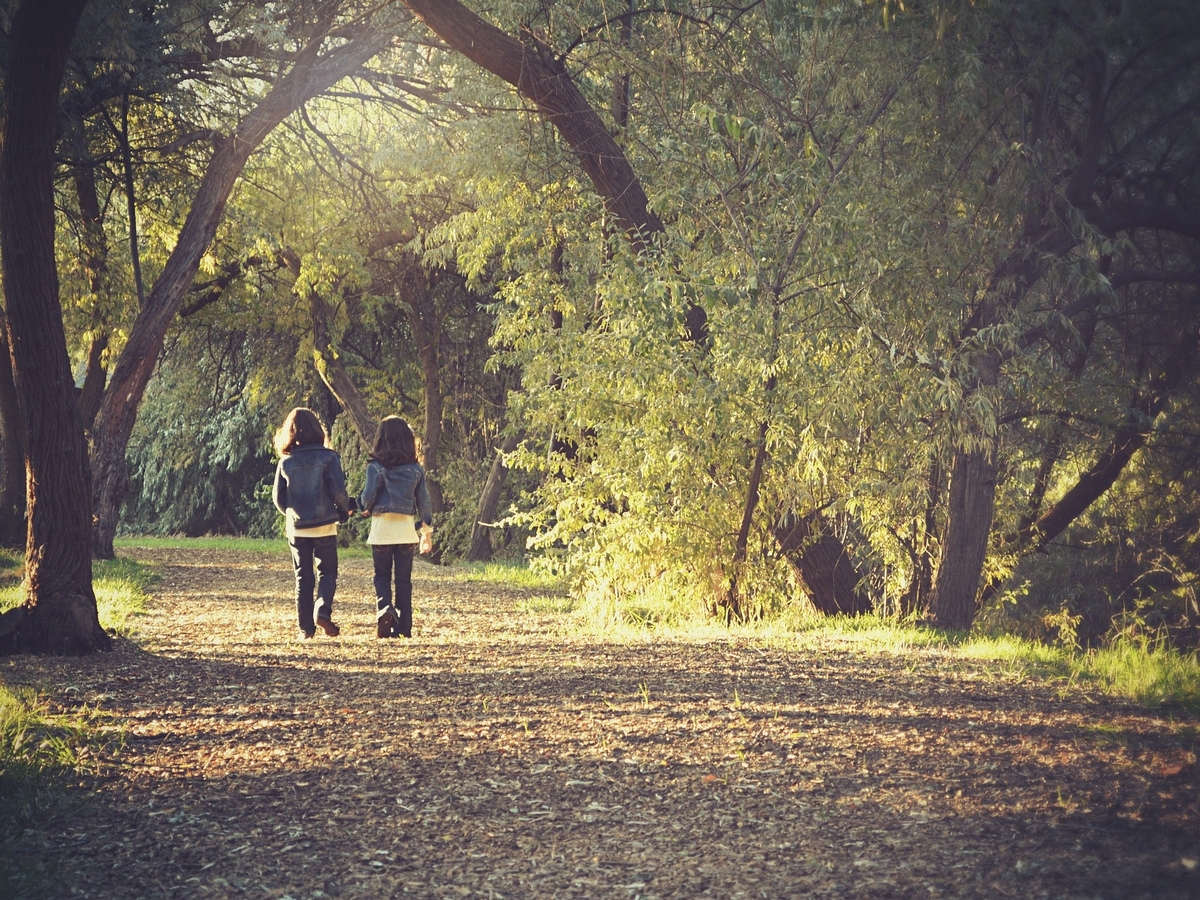
With more tweens and teens getting the COVID vaccine, opportunities for social engagement are increasing. While many are looking forward to this return to normalcy as summer begins, many others are understandably feeling anxious about socializing after 15-plus months of limited social interaction.
Here are some tips for adults to help our tweens and teens navigate this reemergence while also caring for their social and emotional health.
Acknowledge the Issue
Engaging with others can feel hard when you’re out of practice; remember, also, that some teens may be nervous around germs and getting sick. Adults, validate your teens’ feelings around these feelings of worry; even share your own hesitations. Once you have validated these feelings, help the teen and/or tween in your life think about ways they’ve successfully coped with similar worries in the past.
We always want to encourage this reengagement with social activities (even on a small scale) as prolonged absence from socializing can lead to avoidance, which can lead to more pronounced worry.
This recent blog post from Screenagers has some examples and conversation starters for easing everyone back into social interactions this summer and fall. “We...should be applying scaffolding and can experiment with trying to help in different ways,” Dr. Delaney Ruston writes in the post. “The type of help will vary depending on our kids’ ages and situations, but I want to make sure we are all aware that there is a role for our social engineering at times.”
To begin guiding these social interactions, it may be helpful for parents to make a list of social opportunities that feel comfortable at first, such as outdoor-only activities, and add to that list as they (and you) get more comfortable.
Start Small
Big group activities may be too overwhelming at first, so it is perfectly acceptable to start small. Invite a small group of people (or even one or two peers for a social outing) and keep the time short to ensure that your teen/tween feels comfortable. Parents could talk with their teen/tween after the small social outing to assess what worked, what might not have, and what could work for a future outing.
Have a Purpose
A get-together with no purpose may be too open-ended and can lead to more anxiety. Instead, help your teen find a shared purpose while socializing. Some ideas for outdoor or indoor activities include:
- Walking to a store
- Baking/cooking
- Service learning/volunteering
- Playing a game (tennis, board game, etc.)
- Watching a movie
- Enjoying a meal together in an outdoor picnic
- Hiking
- Biking
- A sporting event
Have a Start and End Time
Establishing a start and end time creates structure, which can assist with teens’ comfort levels. Check in when planning an event and ask them how long seems reasonable. Many people may feel emotionally drained with long periods of socializing at first. Parents and/or teens can always increase the duration of activities as time goes by.
Get Input
Solicit input from all parties. When teens are excited about an activity, it will help ease some worry and give them something to look forward to.
Practice
Just like with any skill, practicing our social skills is important. If your teen is open to it, work on conversation starters. Discuss a recent social situation you were involved in and go over how it went, what went well, and what was awkward. The more we normalize awkwardness in social situations, the more comfortable we all become; it is normal!
As we slowly ease back to bigger groups and more social opportunities, you should see your tween’s or teen’s comfort level increase. If you are concerned that they are isolating themselves or seem overly anxious, it may be helpful to reach out to a therapist to practice these skills. Here are some resources that may help you as you navigate finding a therapist:
- Child Mind Institute/Social Anxiety
- Child Mind Institute/Who Can Help with Diagnosis
- Inclusive Therapists
- Find A Therapist: Psychology Today
What we have seen over this last year is that our teens and tweens are resilient and flexible and, given time and practice, these social skills will reemerge.
See The Siena School blog for more posts about social and emotional health, including some lessons in self-care and tips for returning to in-person school.
10 Experiential Self-Care Lessons in a School Day
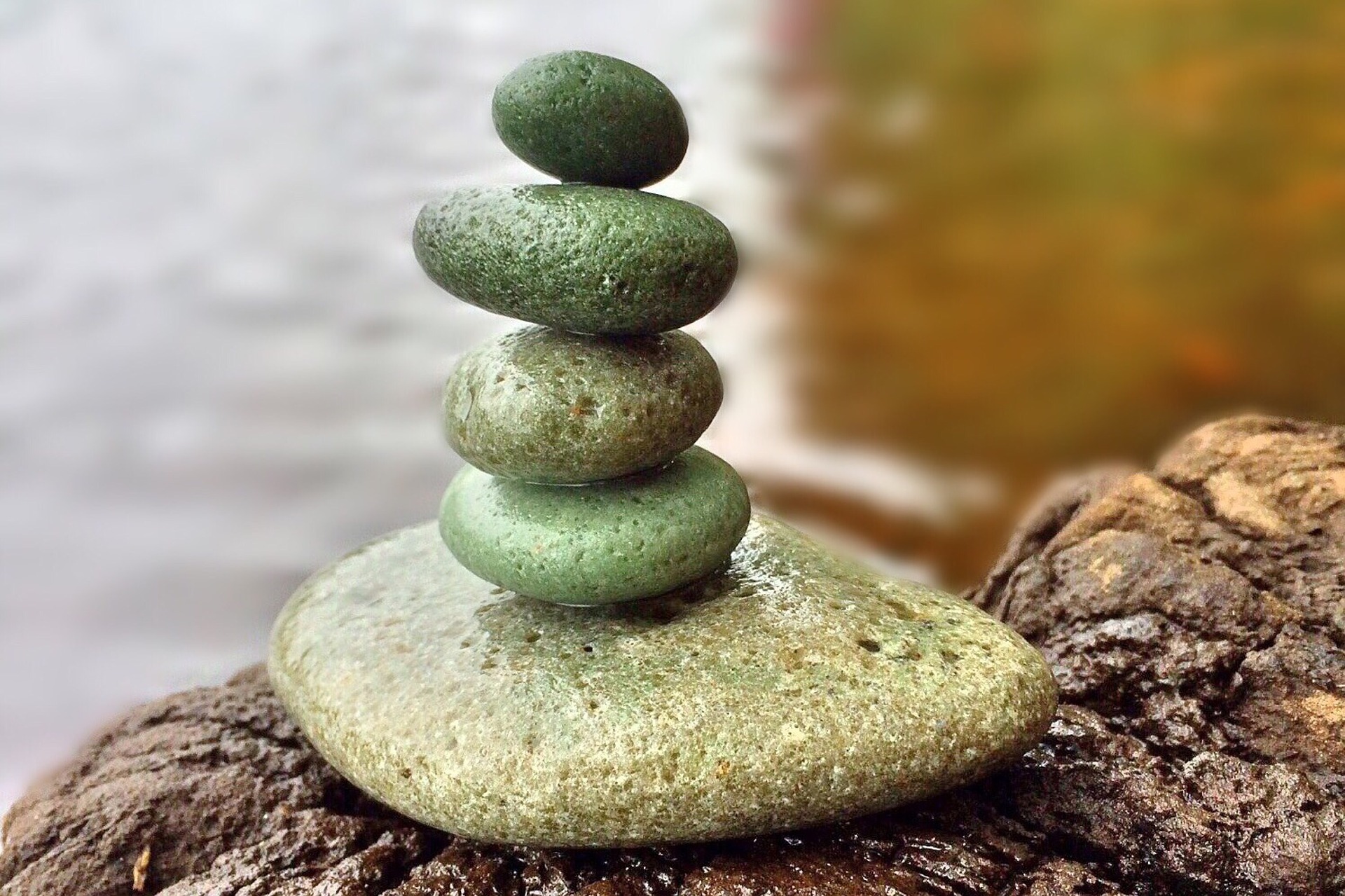
Stress management and self-care tools are needed for our students in normal times, but it’s especially important to offer these tools now.
How do we as educators and counselors keep teaching students about self-care and stress reduction when so much has changed—and continues to do so? When possible, practicing the following exercises virtually alongside our students allows them to feel the benefits in the moment and take them outside class time.
![]() Mindful breathing: While teaching the biology of deep breathing and its activation of the parasympathetic nervous system can be helpful, practicing the following breathing exercises can allow students to feel a sense of calm immediately after the practice. Some breathing exercises to note are:
Mindful breathing: While teaching the biology of deep breathing and its activation of the parasympathetic nervous system can be helpful, practicing the following breathing exercises can allow students to feel a sense of calm immediately after the practice. Some breathing exercises to note are:
- 4-7-8 breathing,
- 5-finger breathing,
- shape breathing (such as square breathing),
- hand tracing breathing,
- infinity breathing,
- extending the exhale by one or two breaths,
- taking 10 deep breaths.
![]() Progressive muscle relaxation: You can guide students through a brief relaxation exercise of tensing specific muscle groups and then relaxing that muscle group completely. Continue this from head to toes. This is a great stress reliever that students can easily do on their own.
Progressive muscle relaxation: You can guide students through a brief relaxation exercise of tensing specific muscle groups and then relaxing that muscle group completely. Continue this from head to toes. This is a great stress reliever that students can easily do on their own.
![]() Mindfulness: There are numerous ways to practice mindfulness, many of which our students might be doing every day. Grounding exercises help students better understand the concept of paying attention to the present moment without judgment. A simple way to introduce the concept of mindfulness is to have students practice the 5 senses by naming:
Mindfulness: There are numerous ways to practice mindfulness, many of which our students might be doing every day. Grounding exercises help students better understand the concept of paying attention to the present moment without judgment. A simple way to introduce the concept of mindfulness is to have students practice the 5 senses by naming:
- 5 things they can see,
- 4 things they can hear,
- 3 things they can feel,
- 2 things they can smell, and
- 1 thing they can taste.
![]() Positives: Research has shown us that when people list 3 Good Things that happened during their day for a period of at least two weeks, they have lower stress and anxiety. Having students list 3 Good Things, big or small, regularly encourages them to focus on the positives in their lives. For instance, Siena teachers and students shared some early positives from our move to distance learning.
Positives: Research has shown us that when people list 3 Good Things that happened during their day for a period of at least two weeks, they have lower stress and anxiety. Having students list 3 Good Things, big or small, regularly encourages them to focus on the positives in their lives. For instance, Siena teachers and students shared some early positives from our move to distance learning.

![]() Gratitude: Ask students to write a letter of gratitude during a class and what they appreciate about a person, object, topic—or even themselves.
Gratitude: Ask students to write a letter of gratitude during a class and what they appreciate about a person, object, topic—or even themselves.
![]() Emotion check-in: Create a routine in which students label how they are feeling. This can be done through a Google form or in other creative ways; educators can offer new emotional vocabulary to help students expand their (evolving) feelings.
Emotion check-in: Create a routine in which students label how they are feeling. This can be done through a Google form or in other creative ways; educators can offer new emotional vocabulary to help students expand their (evolving) feelings.
![]() Controlling what they can: Ask students to draw a circle on a page and write things they can control inside the circle: e.g., their attitude, their perspective, their hygiene, their next meal or drink, how they spend their time, how they care for themselves, and so on. On the outside of the circle, ask students to write things they cannot control at this time; e.g., how others act, the virus, when things will open, etc. Identifying what they can and can’t control can help assuage students’ anxiety, as well as ground them in the moment.
Controlling what they can: Ask students to draw a circle on a page and write things they can control inside the circle: e.g., their attitude, their perspective, their hygiene, their next meal or drink, how they spend their time, how they care for themselves, and so on. On the outside of the circle, ask students to write things they cannot control at this time; e.g., how others act, the virus, when things will open, etc. Identifying what they can and can’t control can help assuage students’ anxiety, as well as ground them in the moment.
![]() Creative projects: Often when students engage in creative endeavors, they are naturally practicing mindfulness. After working on a project, ask students to reflect on how they felt while doing it.
Creative projects: Often when students engage in creative endeavors, they are naturally practicing mindfulness. After working on a project, ask students to reflect on how they felt while doing it.
![]() Movement: Whenever possible, add movement into your lessons. For example, there are many chair yoga poses or other quick bursts of movement that students can do. See this blog post from Siena for how teachers keep students (and themselves!) moving during online classes.
Movement: Whenever possible, add movement into your lessons. For example, there are many chair yoga poses or other quick bursts of movement that students can do. See this blog post from Siena for how teachers keep students (and themselves!) moving during online classes.
![]() Self-care: Ask about your students’ self-care routines. Encourage them to name ways they take care of themselves. Normalize self-care and allow students to share this with one another; hearing from their peers may just encourage them to adopt a new tool. If they’re reticent about sharing, consider giving them some suggestions based on your own self-care techniques. (See below for an example of a weekly wellness challenge.)
Self-care: Ask about your students’ self-care routines. Encourage them to name ways they take care of themselves. Normalize self-care and allow students to share this with one another; hearing from their peers may just encourage them to adopt a new tool. If they’re reticent about sharing, consider giving them some suggestions based on your own self-care techniques. (See below for an example of a weekly wellness challenge.)
Anxiety management and attention to mental health will continue to be important in the coming weeks and months. Getting students to think now about self-care and anxiety management not only helps them finish the school year; it also sets them up for similar practices in the summer when they might miss the structure of school.
As teachers, counselors, parents, and others in students’ support networks are caring for our whole selves, we can keep ensuring that students know how to care for themselves and others.

Caring For Our Whole Selves: Tips and Resources
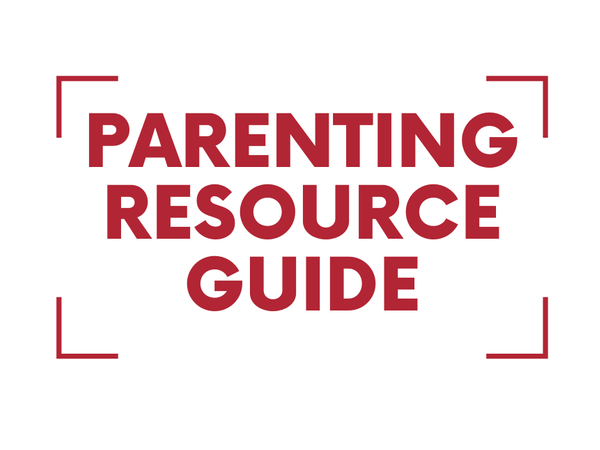
While we’re all being extra-aware of physical health and wellness, remember that our mental health, anxiety management, and self-care are important as well. We’re learning more each day about what to do to keep ourselves and others healthy physically. There are also resources to help support your own and your family’s mental health during this time of distance learning.
Note: The Siena School does not endorse or assume responsibility for any of the programs, services or individuals listed below. This list is solely for the reader’s information.

2-1-1 Maryland
2-1-1 Maryland is partnership of four agencies working together to provide simple access to health and human services information. 2-1-1 is an easy to remember telephone number that connects people with important community services. Our specially trained call specialists answer calls 24 hours a day, every day of the year.

Child Mind Institute
In addition to numerous articles helping parents navigate this challenging time, the Child Mind Institute is offering the following clinical and supportive resources:
- Facebook Live video chats with expert clinicians (10am and 8pm)
- Remote evaluations and telemedicine
- Flat-fee phone consultations for problem behavior
- Daily parent tips on childmind.org, Facebook and Instagram at 8am

EveryMind
During this time of heightened anxiety, EveryMind is encouraging people to utilize their phone, text, and chat call specialists. They are available 24/7 to listen and provide support. This service is free and open to all members of the community. You do not have to be in crisis to connect with EveryMind. Reach out even if you are just looking for ways to support someone you are concerned about.
Call/Text: 301-738-2255

GoZen
GoZen is a suite of educational programs and tools designed to give parents and practitioners what they need to arm kids with essential life skills to not only manage anxiety but to live with deeper engagement and purpose.
During this challenging time, GoZen is offering video chats by four experts to discuss the myriad of challenges that families are navigating.
Helping Kids Play Independently - Avital Schreiber-Levy
Helping Kids Manage Coronavirus Fears - Dr. Laura Markham
Helping Parents Navigate Life Changes Due to Coronavirus - Dr. Shefali Tsabary
Applying Mindfulness to Quell Anxiety - Dr. Elisha & Dr. Stefanie Goldstein
Resources to Help Manage Anxiety
Counselor Keri Blog Post: Helping Kids Who are Worried About the Coronavirus
Counselor Keri: Worry Warrior Videos for our 4th-6th grade students
NY Times Article: 5 Ways to Help Teens Manage Anxiety About the Coronavirus
CNN Article: How to Keep Coronavirus Fears from Affecting Your Mental Health
Resources to Help Manage Anxiety - Apps/Online Activities
Calm: Free Curated Resources for Guided Meditations, Calming Sounds, Movement, etc
Reach Out Australia: Various apps to help manage stress and anxiety
Positive Psychology: 25 Mindfulness Exercises and Games
Free Mindfulness Classes: For Elementary Students
Note: We do not endorse these apps. Check the privacy and appropriateness for your teen.
Our physical and mental health are strongly connected, and you can get the support you need to maintain both for your family—and yourself. Siena will continue to share valuable tips and ideas as we learn more about how to take care of our whole selves. Help is available online and in our communities
Mental Health Awareness Month
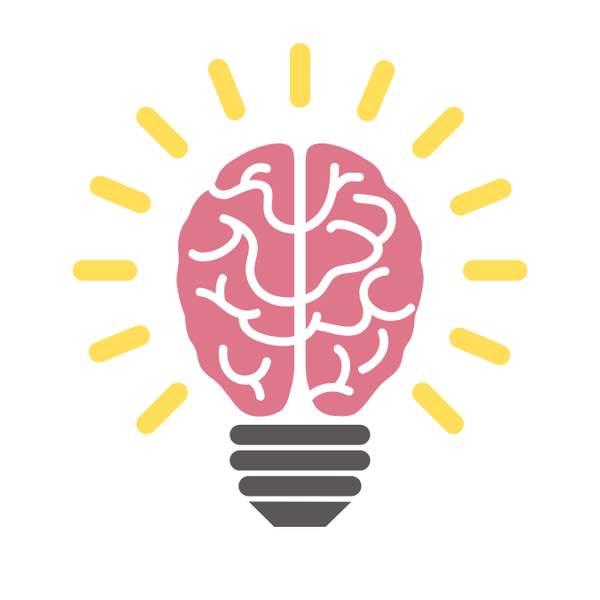
Written by Holly Rothrock, Counselor at The Siena School
Mental Health America (MHA) was founded in 1909 by Clifford Beers, who suffered from a mental illness and was subjected to much abuse as he sought treatment. As a result, he helped found MHA to bring awareness of the need for more humane and effective mental health treatment. In 1949, MHA established the month of May as Mental Health Month to destigmatize mental illness and promote treatment options.
A lot has changed in our culture's perception of mental health since the inception of Mental Health Month, 70 years ago. In the early part of the 20th century, mental health was often a taboo subject and considered a private family matter. Individuals suffering from mental health issues were often institutionalized and suffered discrimination and abuse. Throughout the years MHA and other organizations have fought for comprehensive prevention and treatment. Thankfully through education, the stigma that was once associated with having a mental illness is diminishing but there does remain many misconceptions which is why continuing education programs for the public are imperative.
According to the Department of Health 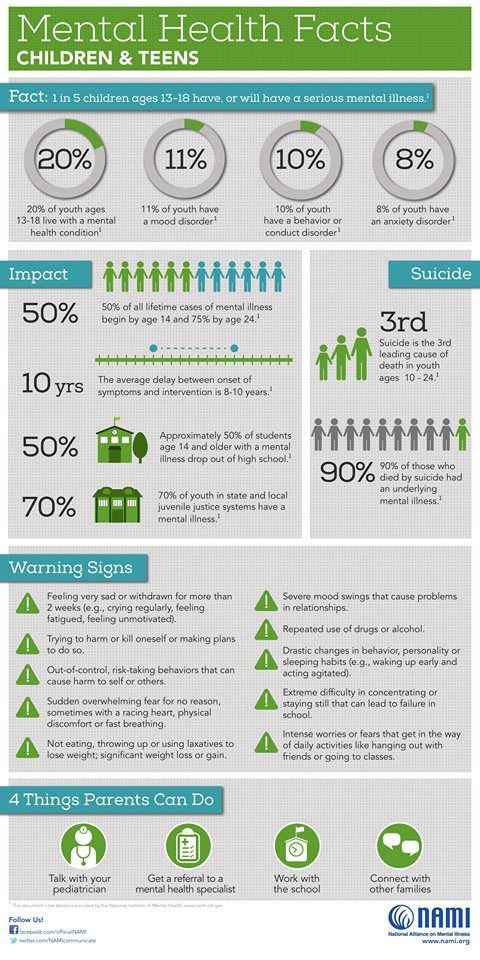 and Human Services, in a given year, approximately 46 million Americans are affected by mental illness and one in five youth experience a mental health disorder. In fact, half of the individuals living with mental illness experienced the onset of their illness by the age of 14. Educators have long known that a students' mental health impacts learning. As of 2018 only two states, New York and Virginia, mandate that mental health is taught in schools. The expectation is that by educating youth, students will be better able to recognize the signs of mental illness in their peers and in themselves and reach out for help. Many organizations are pushing for other states to mandate mental health in health curricula.
and Human Services, in a given year, approximately 46 million Americans are affected by mental illness and one in five youth experience a mental health disorder. In fact, half of the individuals living with mental illness experienced the onset of their illness by the age of 14. Educators have long known that a students' mental health impacts learning. As of 2018 only two states, New York and Virginia, mandate that mental health is taught in schools. The expectation is that by educating youth, students will be better able to recognize the signs of mental illness in their peers and in themselves and reach out for help. Many organizations are pushing for other states to mandate mental health in health curricula.
At The Siena School, we believe strongly that the health curriculum should be comprehensive and include physical and mental health lessons. Starting in elementary school, we introduce mindfulness as a healthy coping strategy. Recently, elementary students focused on a lesson that incorporated listening skills and mindfulness. Using a singing bowl, the students were instructed to listen until they no longer heard the vibrational sounds, they were then challenged to listen for sounds outside of the room. We then make the connection between this activity and active listening. We feel students respond best by both practicing various mindfulness activities and understanding the biology behind why it works; we incorporate lessons about how mindfulness allows for different regions of our brain to communicate with each other.
In middle school, we begin our discussion on stress and the science behind stress. We want students to recognize that some stress is needed for motivation and can be a healthy part of human functioning. Throughout middle school, we are brainstorming healthy coping strategies and specifically which individual strategies work for each student. In one lesson, we explore our individual strengths. We talk about personal challenges, or as students labeled it, "turbulence", and explore which of these identified strengths will help us cope during this "turbulence".
For our high school students, The Siena School hosts health workshops. We have had outside speakers come in to discuss personal experiences with mental illness. An important part of the curriculum is talking about the signs of common mental health disorders as well as review the myriad of treatment options. These workshops are designed to show students that treatment is available and it works. We also focus attention on the benefits of exercise, sleep, nutrition, and social support to our mental wellness.
Family communication is an important component of our mental health education. We have hosted a respected psychologist to speak with our families to answer questions about the difference between developmental changes and when to seek outside guidance. The Siena School shares relevant studies and resources in newsletters and letters to parents.
Our mental health is integral to being able to function and learn. Taking a holistic approach to our health is necessary. The more we bring awareness to mental health, the better-equipped students and families will be to taking charge of their mental wellness.
Below are some other resources that may be helpful for parents or educators when learning about or discussing mental health.
Child Mind Institute: The Child Mind Institute is a great resource that explores both mental health and learning differences. It has a symptom checker that provides access to relevant resources based on a questionnaire.
National Alliance on Mental Illness: This NAMI page offers tips on how to help your child if they have been diagnosed with a mental health condition.
National Institute of Mental Health: This NIMH page lists behaviors that might warrant a mental health assessment as well as links to find treatment providers in specific areas.
Society for Adolescent Health and Medicine: Lists a variety of online resources for specific mental health disorders and concerns. They also link to treatment service locator toward the bottom of the page.
Bringing Fun to Middle School with the Circle of Power & Respect

Written by Beth Fabijanic, Humanities Department Chair and Middle School English Teacher at The Siena School
When I tell people that I teach middle school, their reaction is often, "Wow, I could never do that!" But the truth is the middle school teachers who I know love the daily challenge we face teaching middle-schoolers who are bridging the carefree elementary years and the pressure-cooker that is high school.
As middle-level educators, we believe that much of our job, beyond developing our learners' academic skills, lies in considering and meeting the unique needs of middle-level students as individuals not just learners. The Association for Middle Level Education's (AMLE) position paper, This We Believe: Keys to Educating Young Adolescents, has defined how middle school programs are designed. Two of the most important of the sixteen tenants are:
- The school environment is inviting, safe, inclusive, and supportive of all.
- Organizational structures foster purposeful learning and meaningful relationships.
In line with AMLE, the Origins Program's Developmental Designs (DD) approach succinctly defines the needs of the middle-schooler as fun, competence, relationship, and autonomy which join with supportive community, motivating instruction, and social-emotional skills, to create an engaged learner.
One way that Siena provides for these needs and sets the tone for purposeful learning is with our regular "Circle of Power and Respect," meetings, CPR for short. In small advisory groups of 12-14 students, students and advisors/teachers spend time building community and relationships. The students come from all three grades but join together as a group. Each CPR meeting has four components: greeting, sharing, news, and games.
Greeting and Sharing
By greeting each other, our students create an inclusive community. They practice basic social skills like making eye contact, shaking hands, and acknowledging people by name. After greeting, we share, from simpler to more complex formats as the school year goes on. In the fall, students might share a one-word answer to a question such as "What is your favorite color?". Later in the year, students share more personally such as vacation plans or debating a current social issue as a group like "What's your favorite consumer technology?". We cultivate a listening dynamic by focusing on the give-and-take (i.e. in a whole group share, we only hear one voice at a time) and asking each other questions to deepen the conversation. As the school year progresses, we see new friendships develop across grade levels and students' conversational skills flourish.
News
The daily news takes many forms such as thought-provoking facts about history, science, popular culture, and current events as well as reminders of school events.
Students often leave CPR heading out to first period, still talking about the daily news. Since we use the same daily news in every classroom, these are also topics that students may discuss with other middle-schoolers. Reminders of upcoming school events help support our students' time-management skills.
Games
To meet the students' needs for fun, we play games together such as hand hockey or "Evolution", a pantomime version of rock, paper, scissors where students evolve from a rock to a chicken, to a dinosaur, then to a king as they win rock, paper, and scissors matches.
.jpg)
Sometimes the games might have a winner, but typically, the games prompt us to work together to achieve a goal. Our games become increasingly complex as the year goes on, and we return to old favorites. After playing, we reflect on strategy or ways to improve gameplay. Students often create new rules or suggest ways to increase the challenge level. Strategizing gameplay, playing together and reflecting on achievements and challenges within the game creates a shared, active and reflective mindset among students and teachers to start the school day.
The most popular games at Siena are:
- Hand Hockey
- Heads up, 7Up
- Knots
- Coin Toss - Hand- Squeeze
- Laser Eyes / Look up - Look down
To see the list of games CPR uses, click HERE.
When we recognize and find valuable ways to fulfill our middle schoolers' needs for fun, relationships, competence, and autonomy throughout the day, we are all better prepared to weather the challenges of middle school.
The Benefits of Celebrating Kindness
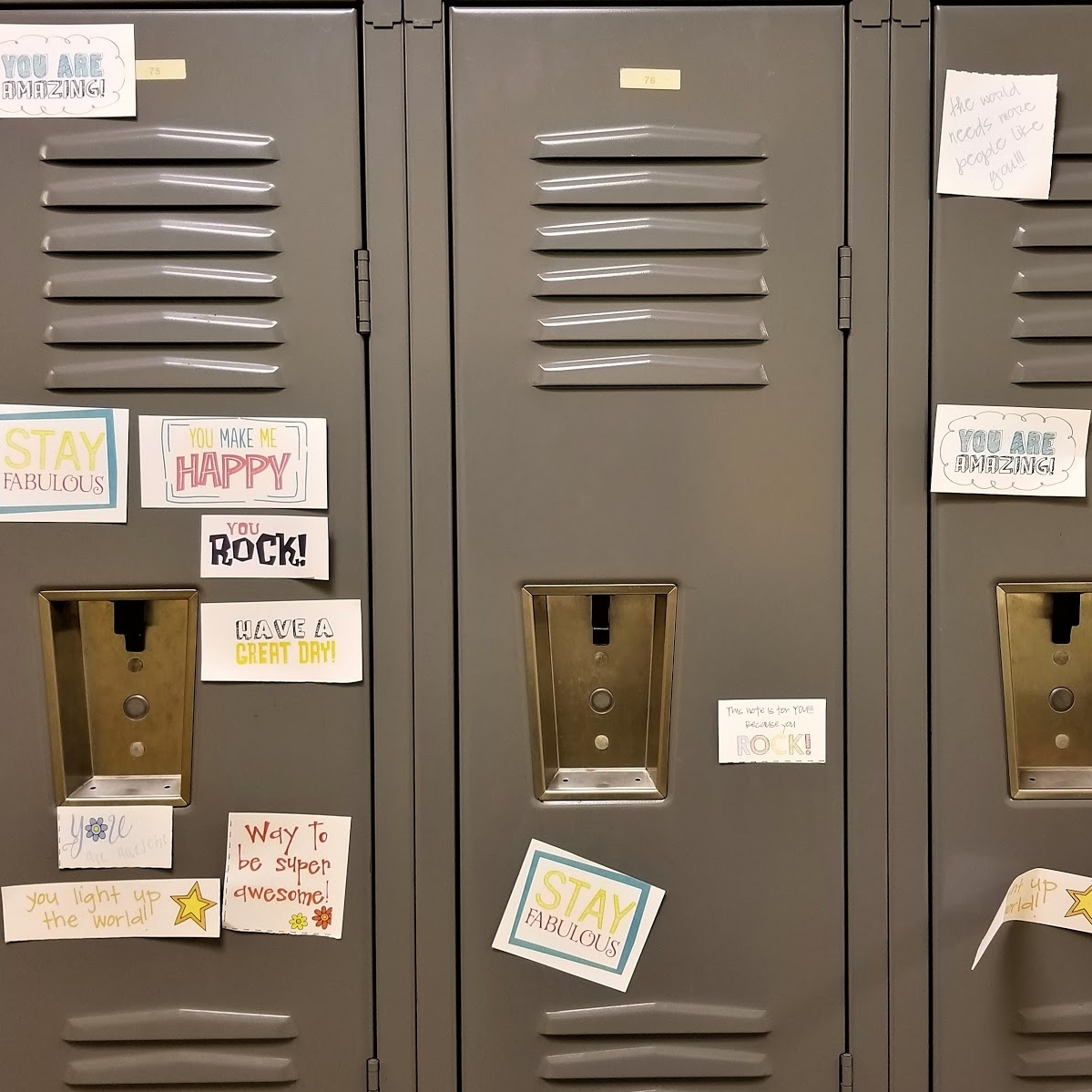
Written by Holly Rothrock, Counselor at The Siena School
The Siena School recently concluded its fourth annual kindness week. We know from their daily interactions that our students at The Siena School are kind and empathetic. In fact, research Kiley Hamlin at the University of British Columbia, proved that children are wired to be kind. Celebrating and encouraging kindness has many benefits; for the recipient and especially for the person being kind.
Some of the benefits of kindness include the release of neurochemicals, dopamine and serotonin. Dopamine is released when we experience something rewarding or pleasurable; when we are kind, our dopamine is boosted giving us a “helper’s high”. Serotonin is associated with a sense of well-being. Being kind also strengthens relationships: when someone shows kindness to another person, it releases oxytocin which is the chemical known for creating bonds between individuals and building social trust. Multiple studies have also shown that when we are kind to another we are more optimistic and positive.
 What did Siena’s Kindness Week look like this year? Colorful cards that read “The world needs more people like you” and “You are more than enough” were plastered on the students’ lockers. To download these printable cards, click here. Our student Kindness Committee created a video for the student body that depicts “kindness contagion”, the notion that when someone performs kind act for us, we are more likely to engage in kind behaviors as well. Students were also “Undercover Kindness Agents”. They picked names and were encouraged to perform anonymous acts of kindness. The students later reflected on the impact of their kindness, both on themselves and on the recipient.
What did Siena’s Kindness Week look like this year? Colorful cards that read “The world needs more people like you” and “You are more than enough” were plastered on the students’ lockers. To download these printable cards, click here. Our student Kindness Committee created a video for the student body that depicts “kindness contagion”, the notion that when someone performs kind act for us, we are more likely to engage in kind behaviors as well. Students were also “Undercover Kindness Agents”. They picked names and were encouraged to perform anonymous acts of kindness. The students later reflected on the impact of their kindness, both on themselves and on the recipient.
Being intentional about kindness is another way to take care of ourselves. When we act in kind ways, we are improving not only the lives of others but our lives as well. Our kindness week succeeded in motivating our students towards acts of kindness and demonstrated the immediate benefits of their benevolence.
What's that Got to Do with Me? Social-Emotional Learning in the Classroom

-
Self-awareness
-
Self-management
-
Social awareness
-
Relationship skills
-
Responsible decision-making
- Why did Viola disguise herself as a man?
- Why does Antonio follow Sebastian into town, even though it is dangerous for him?
-
Who we can turn to in a crisis?
-
What community services we can use in a crisis?


